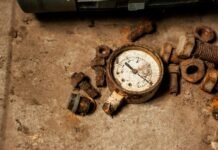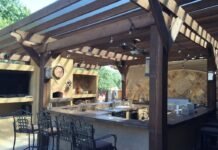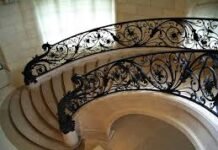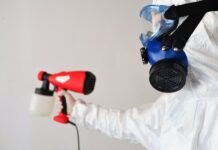Last Updated on July 29, 2022 by
Table of Contents
Noticed the floors aren’t level in your home?
Sloping floors are not uncommon in older properties. One of the major causes is structural or foundation damage, which is typically the most expensive problem to fix. Other causes of uneven floors include water damage or excess moisture and ground movement.
Uneven floors are a nightmare for crawling babies and elderly relatives with reduced mobility. However, floor screed can help to even out any impurities in the subfloor – providing a smooth, flat surface that’s safe and comfortable to walk on, and ready for a final covering of your choice.
Let’s find out more about domestic floor screeding and why it’s required.
What is floor screed?
Floor screed is a cementitious material that’s made from sharp sand and cement.
This blended mixture is usually poured over the top of a subfloor to improve its appearance and increase its strength and durability. It also creates a smooth texture for other materials to be laid atop, or can be used to cover underfloor heating (UFH) pipes.
What is floor screed used for?
Floor screed is primarily used to remove any impurities in floors that aren’t level. However, when applied correctly, and left to fully cure, it can give your flooring more tolerance.
Domestic floor screeding is the go-to choice for self-builders. It can be used for flats, houses, new builds, and barn conversions, whereas commercial floor screeding is commonly used in schools, offices, retail units, and airports.
What are the different types of floor screed?
There are several types of floor screed, including:
- Traditional screeds
- Self-levelling compounds
- Reinforced screeds
- Liquid screeds (anhydrite of free-flowing screeds)
Traditional screeds are made from sand, cement, and water. They create a smooth surface and often contain fibres and additives to reduce shrinkage and cracking. You’ll also discover higher-strength screeds that are perfect for areas that receive high levels of foot traffic – not to mention fast-drying products that take less time to dry, so floor coverings can be laid sooner!
Self-levelling compounds (latex) are generally applied to the top layer of a screed to provide more tolerance for vulnerable floor finishes.
Reinforced floor screeds use fibres. These reduce the stress that’s put on the screed during the drying process and help prevent curling, cracking, and shrinkage.
Similar to fast-drying sand and cement floor screeds, liquid screeds are quick and easy to install and can be used in various domestic and commercial environments.
Do you need your floor screeding?
If you’re looking to take advantage of domestic floor screeding, be sure to get in touch with the experts at JCW Floor Screeding.
They supply and install top-quality floor screeds for customers across the UK and pride themselves on rapid turnaround times and competitive prices. JCW’s screed teams have been screeding domestic floors for decades and ensure professionalism from start to finish.
So, why not give them a call on 01204 387 029? Discuss your requirements in further detail and get the answers to your questions. The friendly team at JCW Floor Screeding will happily share their expertise and offer an accurate price for the task at hand.
Read More: What Is Screed, and How Do You Lay Floor Screed? The Ultimate Guide























